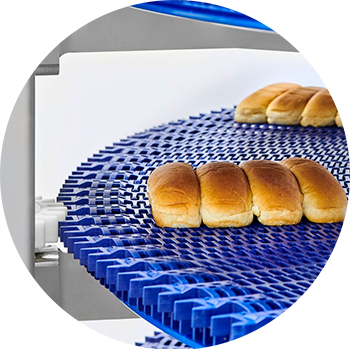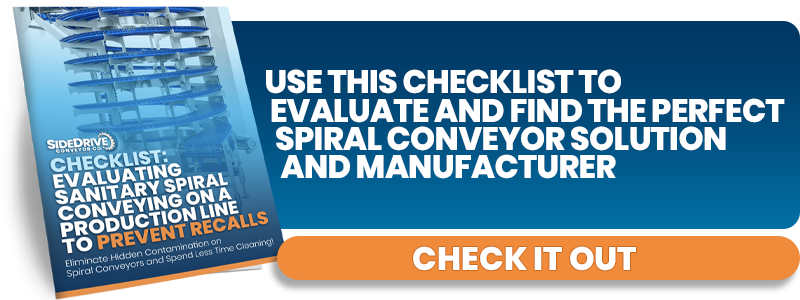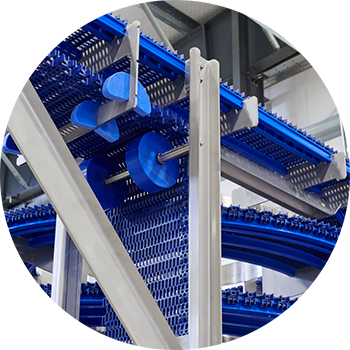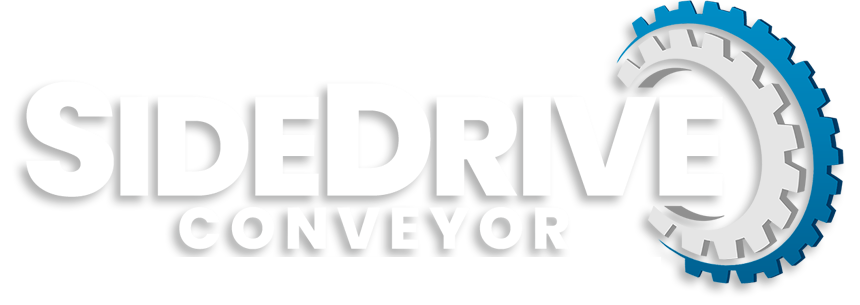When evaluating new technologies and machinery, a necessary element is carrying out extensive due diligence on different solutions before committing to a manufacturer. Food-safe spiral conveyors come in so many different variations that the list of criteria you use to contrast and compare one against the other can become extensive.
 Not only do you need to evaluate potential manufacturers according to their technological capabilities, but you also have to consider your company’s plans for the future. Therefore, the flexibility and configurability of the spiral conveyor’s base design may also have to factor into your evaluation process.
Not only do you need to evaluate potential manufacturers according to their technological capabilities, but you also have to consider your company’s plans for the future. Therefore, the flexibility and configurability of the spiral conveyor’s base design may also have to factor into your evaluation process.
Apart from the above criteria, you need to consider the overall equipment effectiveness (OEE) and the total cost of ownership (TCO). The initial purchase price rarely reflects the true value of the system. Below, we look at some of the factors to consider for TCO and OEE when choosing a spiral conveyor solution for food products.
Alternatively, check out this checklist to determine how a sanitary spiral conveyor can help prevent product recalls and improve food safety.

How to Evaluate the OEE and TCO of Your Next Sanitary Spiral Conveyor
Production yield and throughput often come down to the system’s availability. However, when researching new technologies for your operations, planned and unplanned downtimes aren’t easy to measure.
SideDrive Conveyor Co. mainly focuses on increasing availability when determining the OEE and TCO of our conveyor solutions.
Optimizing Planned and Unplanned Downtimes with a Sanitary Spiral Conveyor
Planned downtime includes shutting down the line to carry out sanitation procedures or conducting maintenance on the system. An edge-driven spiral conveyor helps reduce planned downtime in two ways:
- Maintenance – We use an open frame construction with edge-driven plastic belting that requires zero lubrication. Reduced wear on the components and an accessible design make it easier to maintain the line and keep it running for longer over an extended period.
- Sanitation – Shortening the time required to clean the line between shifts, as well as using fewer detergents provide you with increased availability and reduced operational costs. Theoretically, this also extends the usable life of the belt as you reduce the components’ exposure to caustic cleaning agents such as quaternary ammonium compounds (QACs).
Reducing planned downtime provides you with the opportunity to improve higher throughput that translates into greater profitability. Every minute you save on sanitation and maintenance increases your OEE and decreases the TCO of the system. Easier maintenance and shortened repair cycles also help reduce your unplanned downtimes and increase your mean time to recovery (MTTR).

Additional Cost-Benefits of an Edge-Driven Spiral Conveyor from SideDrive Conveyor Co.
 Increased uptime and reduced maintenance costs are just the tip of the iceberg with an edge-driven spiral conveyor. You also benefit from a modular design that gives you almost infinite configuration possibilities including creating a continuous, transferless conveyor system for all your curing, proofing, and cooling applications. Reducing the number of harborage points and eliminating transfers help decrease your assumed scrap rate, giving you even higher throughput.
Increased uptime and reduced maintenance costs are just the tip of the iceberg with an edge-driven spiral conveyor. You also benefit from a modular design that gives you almost infinite configuration possibilities including creating a continuous, transferless conveyor system for all your curing, proofing, and cooling applications. Reducing the number of harborage points and eliminating transfers help decrease your assumed scrap rate, giving you even higher throughput.
Finally, you have a flexible base system that can evolve with your organization as you introduce new processes to the line. An edge-driven spiral conveyor allows you to convey up and down or over and under your processing equipment. SideDrive Conveyor Co. delivers improved OEE and reduced TCO for food manufacturers that need to maintain productivity without compromising on quality.
To discuss the cost-savings and OEE of our edge-driven spiral conveyors in more detail, reach out to SideDrive Conveyor Co.




 Not only do you need to evaluate potential manufacturers according to their technological capabilities, but you also have to consider your company’s plans for the future. Therefore, the flexibility and configurability of the spiral conveyor’s base design may also have to factor into your evaluation process.
Not only do you need to evaluate potential manufacturers according to their technological capabilities, but you also have to consider your company’s plans for the future. Therefore, the flexibility and configurability of the spiral conveyor’s base design may also have to factor into your evaluation process.

 Increased uptime and reduced maintenance costs are just the tip of the iceberg with an edge-driven spiral conveyor. You also benefit from a modular design that gives you
Increased uptime and reduced maintenance costs are just the tip of the iceberg with an edge-driven spiral conveyor. You also benefit from a modular design that gives you